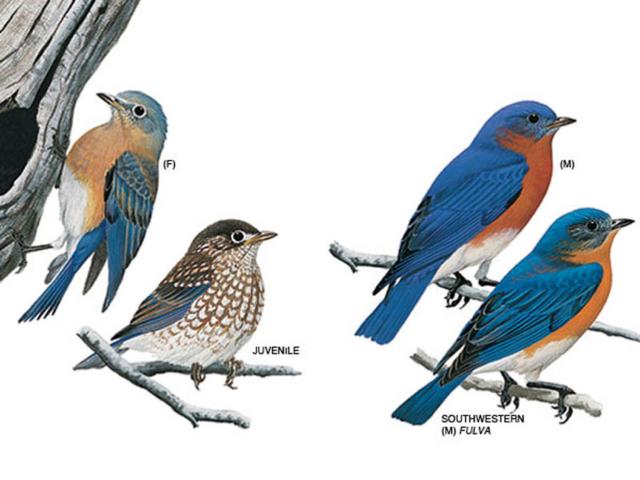 |
Canku Ota
|
 |
|
(Many Paths)
|
||
|
An Online Newsletter
Celebrating Native America
|
||
|
February 2016 - Volume
14 Number 2
|
||
|
|
||
|
The Meaning of the
Blue Bird
Wiyáka totó un akícilowanpi They sang praises using very blue feathers. |
||
|
Our thanks to Holly
Young
|
||
|
Here's what I came up for the meaning of the blue bird (based on my interpretation of the High Dog Winter Count): 1798: Wiya ka tota an apicilo wapi. Wiyáka totó
un akícilowanpi
It was agreed to among the people that any one of the tribe who was seen wearing the blue feathers should be an example to others in virtue and goodness, and should be esteemed by all as a guardian of the "nation." Four men at that time were set apart with the blue feathers. By an old ceremony men were set apart as "Atéyapi" (Fathers) and women as "Ináyapi" (mothers). By this ceremony these people were chosen as leaders in the tribe, and their admonitions were heeded. Sometimes a small child was raised to this class because of a portent at his or her birth that indicated his or her superior wisdom. Grown persons were raised to this class on account of some distinguished service to the tribe, as well as for manifest wisdom and foresight in affairs. Those raised to this class while they were babes are said to have been generally the most satisfactory administrators of justice. Such children received careful training both from those previously raised to this class and also from their grandmothers. They were taught to admonish with discretion and with gentleness, to honor and respect each and every one of every age and themselves; to be kind to dogs and all animals. If one of this class proved unworthy, one was not deposed, but from that time on, or until one had purged oneself of old offenses and adopted better manners one had small influence in the council-meetings, yet the people still respected him or her. As men were gifted with blue feathers to designate their worthiness, women were gifted with blue glass pendants they wore proudly upon their forehead, though this practice has long since faded. Khanpéska Imánipi Win (Walking On The Shell Woman), a wife of Mató Watákpe (Charging Bear; John Grass), was among the last Lakhóta women to have possessed one of what they called Mahpíya Tó, or a Blue Cloud Stone. The stone was actually a flat blue polished piece of glass, possibly volcanic, which was melted and poured into a sand or clay mold. The stone was made by a woman of virtue, and only one was given a year. When it was worn, the woman was held in high esteem by all as good and honorable, a role model for all women.
|
||||
|
|
||
|
|
||
| Canku Ota is a free Newsletter celebrating Native America, its traditions and accomplishments . We do not provide subscriber or visitor names to anyone. Some articles presented in Canku Ota may contain copyright material. We have received appropriate permissions for republishing any articles. Material appearing here is distributed without profit or monetary gain to those who have expressed an interest. This is in accordance with Title 17 U.S.C. Section 107. | ||
|
Canku Ota is a copyright ©
2000 - 2016 of Vicki Williams Barry and Paul Barry.
|
||
 |
 |
|
|
The "Canku
Ota - A Newsletter Celebrating Native America" web site and
its design is the
|
||
|
Copyright ©
1999 - 2016 of Paul C. Barry.
|
||
|
All Rights Reserved.
|
||

